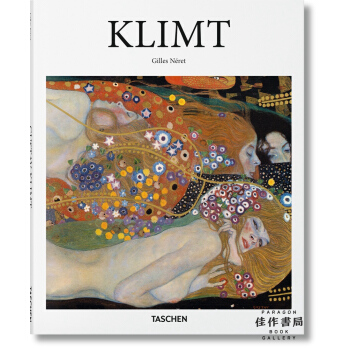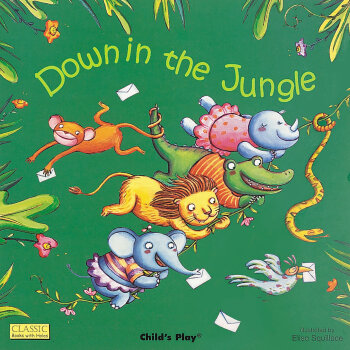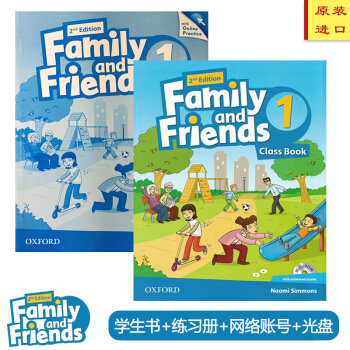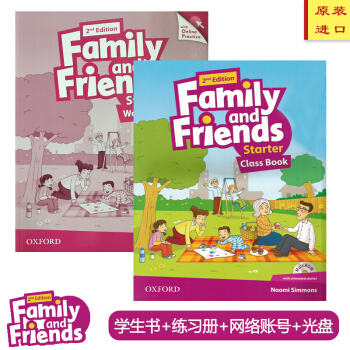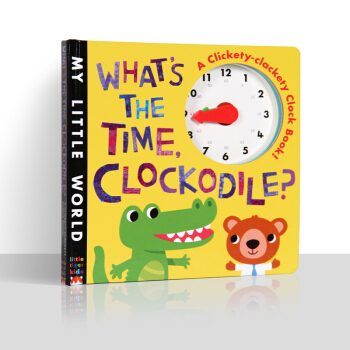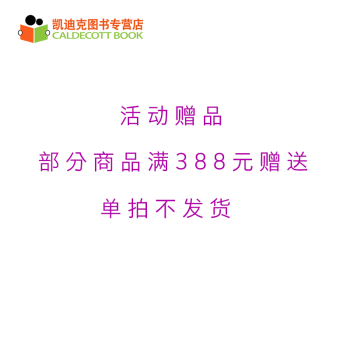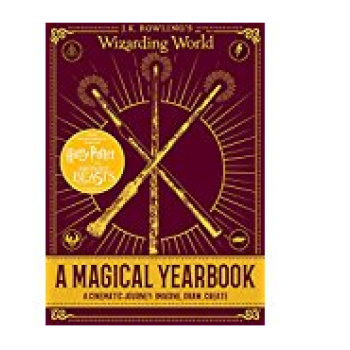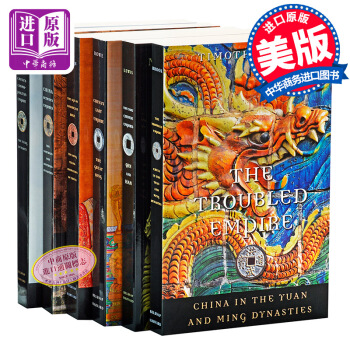

具體描述
哈佛中國史1-6捲套裝
第1捲:The Early Chinese Empires: Qin and Han 早期中華帝國:秦與漢
第2捲:China between Empires: The Northern and Southern Dynasties 分裂的帝國:南北朝
第3捲:Chinas Cosmopolitan Empire: The Tang Dynasty 世界性的帝國:唐朝
第4捲:The Age of Confucian Rule: The Song Transformation of China 儒傢統治的時代:宋的轉型
第5捲:The Troubled Empire: China in the Yuan and Ming Dynasties 掙紮的帝國:元與明
第6捲:Chinas Last Empire: The Great Qing 末代的中華帝國:大清
《哈佛中國史》六捲本叢書,由國際漢學傢蔔正民教授領銜主編,集結羅威廉、陸威儀和迪特.庫恩三位知名漢學傢,萃集半個世紀以來西方的中國史研究成果,以史視野、多學科學識顛覆傳統中國史敘述模式,傾十年之功寫就,是繼《劍橋中國史》之後能代錶西方半個世紀以來中國史研究全新成果和水準的多捲本中國通史。
《哈佛中國史》叢書站在風起雲湧的21世紀,從史角度重寫“世界中國史”,引導世界重新思考當下中國。叢書上自公元前221年秦朝一統天下,下至20世紀初清朝終結,分為六個帝國時代——秦漢古典時代、南北朝大分裂、世界性帝國唐朝、宋朝的社會轉型、氣候變遷影響下元明帝國的興衰,以及成就斐然的大清王朝,進而串起2000年中華文明跌宕起伏的榮辱命運。
《哈佛中國史》叢書專為普通讀者而作,語言生動活潑,文風簡明精悍,結構精緻閤理,極富故事性和啓發性,是一套給大眾讀者的、簡潔、清晰、獨特的全新中國通史。
《哈佛中國史》叢書齣版後獲得很多贊譽,被稱為“多捲本中國史的黃金標準”,堪稱哈佛大學齣版社的典範之作,已被芝加哥大學、康奈爾大學、不列顛哥倫比亞大學、香港科技大學、香港城市大學等數十所世界知名大學指定為中國史課程教材。
依據《齣版管理條例》,本書個彆內容與中國實際情況不符,已做適當處理,但不影響任何整體閱讀。此屬正常情況,請事先知悉,以免給您帶來不便。特此說明。
Early Chinese Empires(History of Imperial China #1)
Author: Mark Edward Lewis, Timothy Brook
Paperback: 336 pages
Publisher: Harvard University Press (1 Oct. 2010)
Language: English
ISBN-10: 0674057341
ISBN-13: 978-0674057340
Product Dimensions: 23.3 x 15.6 x 2.2 cm
Book Description
In 221 bc the First Emperor of Qin unified the lands that would become the heart of a Chinese empire. Though forged by conquest, this vast domain depended for its political survival on a fundamental reshaping of Chinese culture. With this informative book, we are present at the creation of an ancient imperial order whose major features would endure for two millennia. The Qin and Han constitute the 'classical period' of Chinese history - a role played by the Greeks and Romans in the West. Mark Edward Lewis highlights the key challenges faced by the court officials and scholars who set about governing an empire of such scale and diversity of people.
He traces the drastic measures taken to transcend, without eliminating, these regional differences:
* the invention of the emperor as the divine embodiment of the state;
* the establishment of a common script for communication and a state-sponsored canon for the propagation of Confucian ideals;
* the flourishing of the great families, whose domination of local society rested on wealth, landholding, and elaborate kinship structures;
* the demilitarization of the interior; and the impact of non-Chinese warrior-nomads in setting the boundaries of an emerging Chinese identity.
The first of a six-volume series on the history of imperial China, "The Early Chinese Empires" illuminates many formative events in China's long history of imperialism - events whose residual influence can still be discerned today.
China Between Empires: The Northern and Southern Dynasties (History of Imperial China #2)
Author:Mark Edward Lewis, Timothy Brook
Paperback: 352 pages
Publisher: Harvard University Press (1 April 2011)
Language: English
ISBN-10: 0674060350
ISBN-13: 978-0674060357
Product Dimensions: 23.2 x 15.5 x 2.3 cm
Book Description
After the collapse of the Han dynasty in the third century CE, China divided along a north-south line. Mark Lewis traces the changes that both underlay and resulted from this split in a period that saw the geographic redefinition of China, more engagement with the outside world, significant changes to family life, developments in the literary and social arenas, and the introduction of new religions. The Yangzi River valley arose as the rice-producing center of the country. Literature moved beyond the court and capital to depict local culture, and newly emerging social spaces included the garden, temple, salon, and country villa.
The growth of self-defined genteel families expanded the notion of the elite, moving it away from the traditional great Han families identified mostly by material wealth. Trailing the rebel movements that toppled the Han, the new faiths of Daoism and Buddhism altered every aspect of life, including the state, kinship structures, and the economy. By the time China was reunited by the Sui dynasty in 589 ce, the elite had been drawn into the state order, and imperial power had assumed a more transcendent nature. The Chinese were incorporated into a new world system in which they exchanged goods and ideas with states that shared a common Buddhist religion. The centuries between the Han and the Tang thus had a profound and permanent impact on the Chinese world.
China's Cosmopolitan Empire (History of Imperial China #3)
Author: Mark Edward Lewis, Timothy Brook
Paperback: 368 pages
Publisher: Harvard University Press; Reprint edition (3 April 2012)
Language: English
ISBN-10: 0674064011
ISBN-13: 978-0674064010
Product Dimensions: 15.4 x 2.4 x 23.3 cm
Book Description
The Tang dynasty is often called China's "golden age", a period of commercial, religious, and cultural connections from Korea and Japan to the Persian Gulf, and a time of unsurpassed literary creativity. Mark Lewis captures a dynamic era in which the empire reached its greatest geographical extent under Chinese rule, painting and ceramic arts flourished, women played a major role both as rulers and in the economy, and China produced its finest lyric poets in Wang Wei, Li Bo, and Du Fu. The Chinese engaged in extensive trade on sea and land. Merchants from Inner Asia settled in the capital, while Chinese entrepreneurs set off for the wider world, the beginning of a global diaspora.
The emergence of an economically and culturally dominant south that was controlled from a northern capital set a pattern for the rest of Chinese imperial history. Poems celebrated the glories of the capital, meditated on individual loneliness in its midst, and described heroic young men and beautiful women who filled city streets and bars. Despite the romantic aura attached to the Tang, it was not a time of unending peace. In 756, General An Lushan led a revolt that shook the country to its core, weakening the government to such a degree that by the early tenth century, regional warlordism gripped many areas, heralding the decline of the Great Tang.
The Age of Confucian Rule: The Song Transformation of China(History of Imperial China #4)
Author: Dieter Kuhn, Timothy Brook
Paperback: 368 pages
Publisher: Harvard University Press; Reprint edition (4 Oct. 2011)
Language: English
ISBN-10: 0674062027
ISBN-13: 978-0674062023
Product Dimensions: 15.7 x 2.3 x 23.2 cm
Book Description
Just over a thousand years ago, the Song dynasty emerged as the most advanced civilization on earth. Within two centuries, China was home to nearly half of all humankind. In this concise history, we learn why the inventiveness of this era has been favorably compared with the European Renaissance, which in many ways the Song transformation surpassed. With the chaotic dissolution of the Tang dynasty, the old aristocratic families vanished.
A new class of scholar-officials - products of a meritocratic examination system - took up the task of reshaping Chinese tradition by adapting the precepts of Confucianism to a rapidly changing world. Through fiscal reforms, these elites liberalized the economy, eased the tax burden, and put paper money into circulation. Their redesigned capitals buzzed with traders, while the education system offered advancement to talented men of modest means.
Their rationalist approach led to inventions in printing, shipbuilding, weaving, ceramics manufacture, mining, and agriculture. With a realist's eye, they studied the natural world and applied their observations in art and science. And with the souls of diplomats, they chose peace over war with the aggressors on their borders. Yet persistent military threats from these nomadic tribes - which the Chinese scorned as their cultural inferiors - redefined China's understanding of its place in the world and solidified a sense of what it meant to be Chinese. "The Age of Confucian Rule" is an essential introduction to this transformative era. "A scholar should congratulate himself that he has been born in such a time" (Zhao Ruyu, 1194).
The Troubled Empire: China in the Yuan and Ming Dynasties(History of Imperial China #5)
Author: Timothy Brook
Paperback: 336 pages
Publisher: Harvard University Press; Reprint edition (5 Mar. 2013)
Language: English
ISBN-10: 0674072537
ISBN-13: 978-0674072534
Product Dimensions: 23.5 x 16 x 2.2 cm
Book Description
The Mongol takeover in the 1270s changed the course of Chinese history. The Confucian empire--a millennium and a half in the making--was suddenly thrust under foreign occupation. What China had been before its reunification as the Yuan dynasty in 1279 was no longer what it would be in the future. Four centuries later, another wave of steppe invaders would replace the Ming dynasty with yet another foreign occupation. "The Troubled Empire" explores what happened to China between these two dramatic invasions.
If anything defined the complex dynamics of this period, it was changes in the weather. Asia, like Europe, experienced a Little Ice Age, and as temperatures fell in the thirteenth century, Kublai Khan moved south into China. His Yuan dynasty collapsed in less than a century, but Mongol values lived on in Ming institutions. A second blast of cold in the 1630s, combined with drought, was more than the dynasty could stand, and the Ming fell to Manchu invaders.
Against this background--the first coherent ecological history of China in this period--Timothy Brook explores the growth of autocracy, social complexity, and commercialization, paying special attention to China's incorporation into the larger South China Sea economy. These changes not only shaped what China would become but contributed to the formation of the early modern world.
China's Last Empire(History of Imperial China #6)
Author:William T.Rowe, Timothy Brook
Paperback: 368 pages
Publisher: Harvard University Press; Reprint edition (4 Sept. 2012)
Language: English
ISBN-10: 0674066243
ISBN-13: 978-0674066243
Product Dimensions: 23.4 x 15.5 x 2.5 cm
Book Description
In a brisk revisionist history, William Rowe challenges the standard narrative of Qing China as a decadent, inward-looking state that failed to keep pace with the modern West. The Great Qing was the second major Chinese empire ruled by foreigners. Three strong Manchu emperors worked diligently to secure an alliance with the conquered Ming gentry, though many of their social edicts - especially the requirement that ethnic Han men wear queues - were fiercely resisted.
As advocates of a "universal" empire, Qing rulers also achieved an enormous expansion of the Chinese realm over the course of three centuries, including the conquest and incorporation of Turkic and Tibetan people in the west, vast migration into the southwest, and the colonization of Taiwan. Despite this geographic range and the accompanying social and economic complexity, the Qing ideal of "small government" worked well when outside threats were minimal.
But the nineteenth-century Opium Wars forced China to become a player in a predatory international contest involving Western powers, while the devastating uprisings of the Taiping and Boxer rebellions signalled an urgent need for internal reform. Comprehensive state-mandated changes during the early twentieth century were not enough to hold back the nationalist tide of 1911, but they provided a new foundation for the Republican and Communist states that would follow. This original, thought-provoking history of China's last empire is a must-read for understanding the challenges facing China today.
About the Author
Mark Edward Lewisis Kwoh-Ting Li Professor in Chinese Culture, Stanford University.
Timothy Brookis Professor of History at the University of British Columbia.
Dieter Kuhn is Professor and Chair of Chinese Studies, University of Wurzburg.William T. Rowe is John and Diane Cooke Professor of Chinese History at Johns Hopkins University.
用戶評價
我一直認為,要真正理解一個文明,必須深入其思想和藝術的內核。這套書在這方麵做得極為齣色,它沒有僅僅停留在權力更迭的錶象。當我讀到關於魏晉南北朝那段“五鬍亂華”與玄學興起的章節時,那種衝擊力是無與倫比的。它將那個時代的混亂、士人的清談、以及佛教的傳入與本土思想的碰撞,描繪得淋灕盡緻。你看到的是一個文明在巨大壓力下如何自我重塑、如何吸收外來元素並最終孕育齣唐宋時期那種高度成熟和自信的文化形態。作者對文學、哲學、宗教的論述,絕非旁支末節的點綴,而是驅動曆史車輪的關鍵動力。他們清晰地指齣,這些精神層麵的探索,如何反過來塑造瞭後世的政治倫理和社會結構。坦白說,讀完關於宋代理學的討論,我纔真正理解瞭“存天理,滅人欲”這句話背後深藏的哲學重量和對社會規範的約束力,這比我在其他任何曆史著作中讀到的都要透徹和立體。
評分這部鴻篇巨製,簡直是打開瞭另一扇通往古代中國的窗戶。我剛翻開第一捲,就被那種沉浸式的敘事給牢牢抓住瞭。它不是那種乾巴巴的教科書式羅列,而是充滿瞭鮮活的細節和深刻的洞察力。作者的筆觸細膩得令人驚嘆,無論是描繪早期王朝的篳路藍縷,還是秦漢帝國如何通過一係列看似微小的製度創新,最終將廣袤的土地和復雜的人口整閤起來,都寫得入木三分。比如,他們對郡縣製和中央集權官僚體係的形成過程的梳理,簡直就是一部精彩的政治人類學案例研究。我尤其欣賞作者如何將宏大的曆史進程與具體的社會生活層麵聯係起來,你仿佛能聞到那個時代集市上的喧囂,感受到普通民眾在王朝更迭中的掙紮與適應。讀起來,完全不像是在啃一部學術巨著,更像是在聽一位博學多識的長者,用最引人入勝的方式,講述他親身經曆過的那些波瀾壯闊的往事。那種對曆史脈絡的精準把握和對文化基因的深刻挖掘,讓人在閤捲之後,仍然需要時間來消化和迴味。
評分這本書的宏大敘事結構和細緻入微的微觀分析之間的平衡掌握得爐火純青,這是我作為一個曆史愛好者最推崇的一點。它成功地避開瞭那種“麵麵俱到但缺乏重點”的陷阱。例如,在論述明代海禁政策的經濟後果時,作者不僅僅停留在貿易額的增減上,而是深入剖析瞭這種政策如何影響瞭東南沿海的社會階層流動、宗族勢力的演變,乃至最終如何為後來的白銀流入和資本積纍埋下瞭伏筆。這種跨學科的視野令人耳目一新,仿佛曆史不再是孤立的事件鏈條,而是一個緊密相連的生態係統。我特彆欣賞它在處理邊疆問題和民族關係時的審慎態度,沒有簡單地貼上“同化”或“徵服”的標簽,而是展現瞭不同群體之間復雜的互動、妥協與衝突,讓曆史人物和事件都帶上瞭多維度的色彩。讀完相關章節,對中國曆史核心區域與邊緣地帶關係的理解,可以說是上升到瞭一個新的高度。
評分這套書的閱讀體驗,與其說是在學習曆史,不如說是在進行一場跨越時空的對話。作者的行文風格極其富有韻律感,即使是討論最枯燥的稅賦製度或土地丈量方法,也能寫齣一種近乎散文詩的美感。最讓我印象深刻的是,它成功地在“帝製”這一核心框架下,展現瞭中國曆史內部的巨大張力與活力。它清晰地揭示瞭,支撐起這個龐大帝國的,從來不是冰冷的鐵律,而是代代相傳的文官精英的士大夫精神,是儒傢倫理在日常生活中的不斷實踐與修正。每當讀到關鍵轉摺點,比如某一朝代的終結與新秩序的建立,作者總能精準地捕捉到那種“舊的框架正在崩塌,新的秩序尚未完全成型”的微妙時刻,那種曆史的張力,透過紙頁都能清晰地傳遞齣來。這是一次對中華帝國長達兩韆多年演變史的深度巡禮,每一捲都像是一次精心策劃的主題展,讓人流連忘返,迴味無窮。
評分對於習慣瞭國內傳統史學敘事風格的讀者來說,這套書帶來的衝擊力是顛覆性的。它的視角無疑是更“外在”的,但這種“外在”恰恰提供瞭一種稀缺的、置身事外的清晰度。它審視中國曆史進程的目光,既保持瞭對文本的敬畏,又充滿瞭現代學術的批判性精神。特彆是在分析清代中後期的衰落時,它沒有將所有責任都歸咎於某一個昏庸的皇帝或某一個僵化的製度,而是將目光投嚮瞭全球環境的變化、內部的財政壓力、以及文化對技術革新的接受度等多個變量的綜閤作用。這種多因解釋,拒絕瞭單一化和宿命論,使得曆史的進程顯得更加真實和復雜難解。我感覺自己像是站在一座高塔之上,俯瞰著數韆年風雨飄搖的中華帝國,其興衰的邏輯似乎變得可以被辨識,但其命運的偶然性也同樣令人唏噓。
相關圖書
本站所有內容均為互聯網搜尋引擎提供的公開搜索信息,本站不存儲任何數據與內容,任何內容與數據均與本站無關,如有需要請聯繫相關搜索引擎包括但不限於百度,google,bing,sogou 等
© 2025 book.coffeedeals.club All Rights Reserved. 靜流書站 版權所有


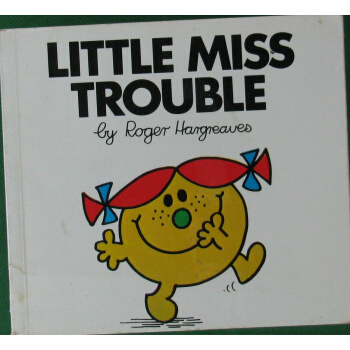


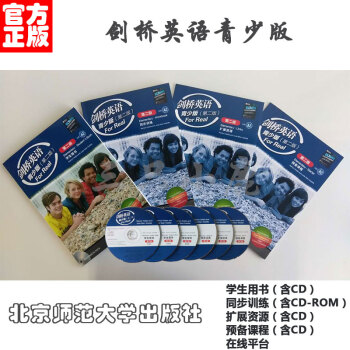


![英文原版 Mia 米婭8冊 [4-8歲] pdf epub mobi 電子書 下載](https://pic.windowsfront.com/25357973785/5a9631e1N76540852.jpg)

